From Emmanuel Anasstaides to Mike Anderson- not Michael and no middle name or initial. He was from Asia Minor and all the records were destroyed when Turkey invaded. The only way I found his “real” name was on the receipt for his burial it said Mike Anderson AKA Emmanuel Anasstaides and I don’t even know if that is the correct spelling because my great-grandmother was ashamed that he was from Asia Minor so always hid it and I’m not sure she was correct.
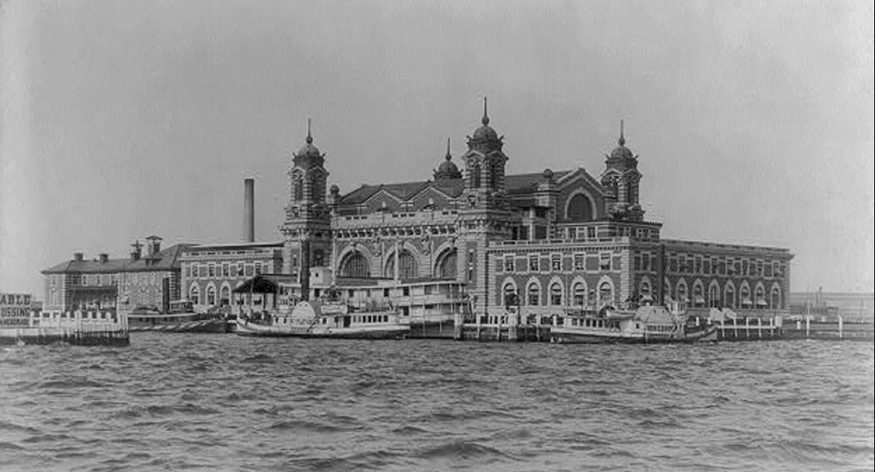

This is a guest post written by MyHeritage Blog editor and contributor Schelly Talalay Dardashti, MyHeritage’s US Genealogy Advisor.
Was your name changed at Ellis Island? The simple answer is no. It never happened.
Today there are millions of descendants of immigrants to the US who firmly believe this myth and, despite the best and continued efforts of prominent genealogists and immigration experts, this myth seems impossible to stamp out.
Whenever I speak to societies or at conferences, I usually start by asking “Was your ancestor’s name changed at Ellis Island?” Many people raise their hands.
Why do so many people believe this myth?
It didn’t help that Vito Corleone (“The Godfather, Part 2”) had his name changed at Ellis Island when he arrived. And that even some tour guides at Ellis Island perpetuate this myth. And that a recent New Yorker story (October 9) detailed how TV personality Rachel Maddow’s family (originally Medvedyev) received their new name from an Ellis Island clerk.
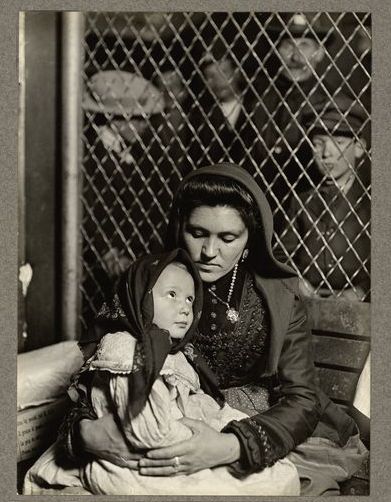 Mother and child, Italian Ellis Island, 1905" width="391" height="502" />
Mother and child, Italian Ellis Island, 1905" width="391" height="502" />The Miriam and Ira D. Wallach Division of Art, Prints and Photographs: Photography Collection, The New York Public Library. (1905). Mother and child, Italian Ellis Island, 1905
Some say that their beloved great-grandmother (insert any other immigrant relative here) told them it happened. When you ask how old their great-grandmother was when she arrived, they say she was 6 months old. If she was that young, she was not a credible witness to the supposed change but was told by other relatives.
Others claim that because their ancestor had a heavy accent or couldn’t speak English, the immigration clerk could not understand them and simply gave them a new name. This never happened because:
–The only thing the clerk did was check off the names on the passenger manifest which was compiled before the ship sailed from Europe. The Ellis Island clerk never asked the immigrant his or her name.
–In any case, some 30% of the immigration clerks were themselves multi-lingual immigrants and some 60 languages were spoken, with translators available at all times.
–There was no name-change form or any process for an immigration clerk to change a person’s name. It was not a court of law.
This myth has become so completely incorporated into the immigrant experience that even writers for major newspapers have mistakenly referred to it, even best-selling novelists include name-change scenes in novels. One author has a name-change scene where two Italian immigrants are taken into a room by a clerk (an immigrant himself) and shown a list of “American” names and told to choose one to make it easier to make their way in the New World.
Recently, in one large Facebook genealogy group, numerous posts about how ancestor’s names were changed at Ellis Island garner many comments, with the genealogists who know the truth faced off against people who absolutely believe their ancestors’ stories.
According to the US Immigration and Naturalization Service senior historian Marian L. Smith:
The report that the clerk “wrote down” the immigrants surname is suspect. During immigration inspection at Ellis Island, the immigrant confronted an inspector who had a passenger list already created abroad. That inspector operated under rules and regulations ordering that he was not to change the identifying information found for any immigrant UNLESS requested by the immigrant, and unless inspection demonstrated the original information was in error.
But the question remains, how and why this myth is still believed.
Back in the golden age of immigration to the US, immigration was a fluid process. You bought a ticket with your own funds or were sent one by a relative already in the US. You provided travel documents of some kind (varied by country) to get that ticket. Remember that travel documents were written in a variety of alphabets and languages that had to be translated and transliterated so that ship personnel could prepare the passenger manifest. Changes could have occurred at this point, but this was before the ship sailed.
Once you arrived in New York, Boston, Philadelphia or any of the other some 30 US Ports of Entry, you could change your name to anything you wanted the minute you stepped into the city. The name-change process did not require a court process or form. However, naturalization papers often included information on the person’s original name and, in some cases, required evidence of arrival and the original name on the manifest from the steamship company. If you are really lucky, depending on date of arrival or filing of papers, there might even be a photo of your immigrant ancestor!
In some cases, like our own, an earlier Talalai arrival (1898) changed the family name. The story handed down through the generations was that he had met a man on the ship who knew some English. He advised our immigrant ancestor to change his name, as no one would give a job to Mr. Tell-a-lie.
Max (formerly Mendl) wrote home to Mogilev, Belarus from his new home in Springfield, Massachusetts and said that the new name was Tollin. Many back home heard his message and, when they arrived, decided on one or another of the “new” name variations, including Tollin, Toll, Tall, Taylor and even Feinstein (that’s a long story for another blog post!). My great-grandfather Aron who arrived in 1904, went through a few ranging from Tolini (making himself Italian) and Tolin, before finalizing as Tollin, while his brother David – who lived only a few blocks away in Newark, New Jersey – decided on Tallin. But no Talalai/Talalay ever claimed his or her name was changed at Ellis Island.
We recently added Ellis Island and other New York Passenger Lists to SuperSearch™. The collection is of great significance for everyone looking to trace their immigrant ancestors’ arrival in America. You can search for information about your ancestors who immigrated to the US, including their original names, using the collection now.
Here are some articles detailing the process and confirming that names were not changed at Ellis Island or the other US Ports of Entry.
Marian L. Smith, senior historian, US Immigration and Naturalization Service, offers her thoughts here.
An excellent article from the New York Public Library is here.
If you would like to read additional articles dispelling this myth, click here.
Were you told that your ancestor’s name was changed at Ellis Island? Please share your ancestors’ stories in the comments below.



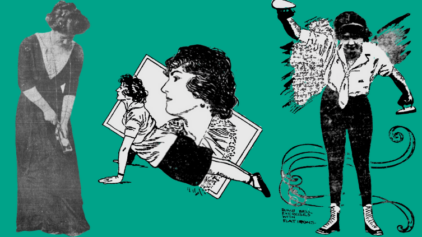

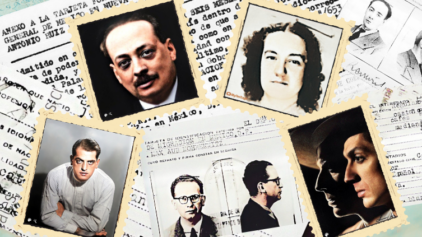
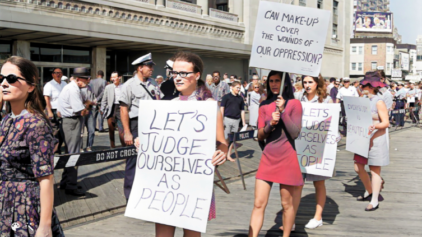



Carol Starmont
November 6, 2017
Yes from Sternberg to Starmont